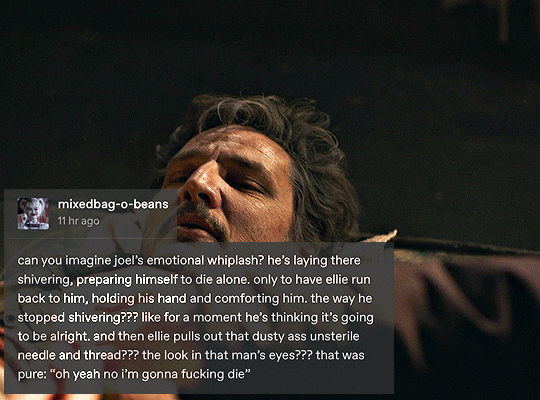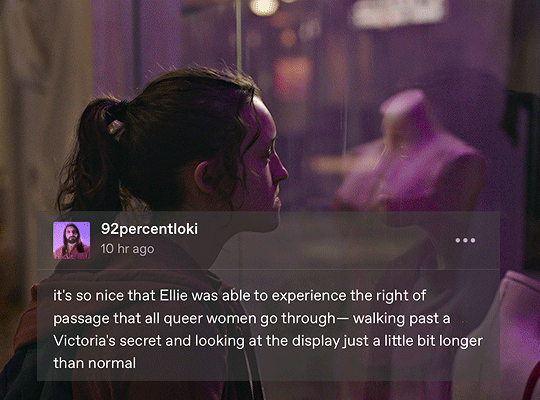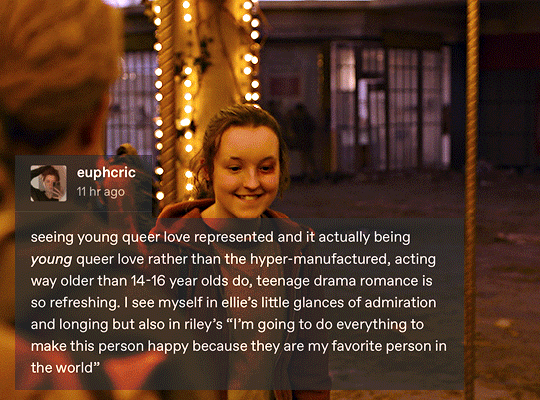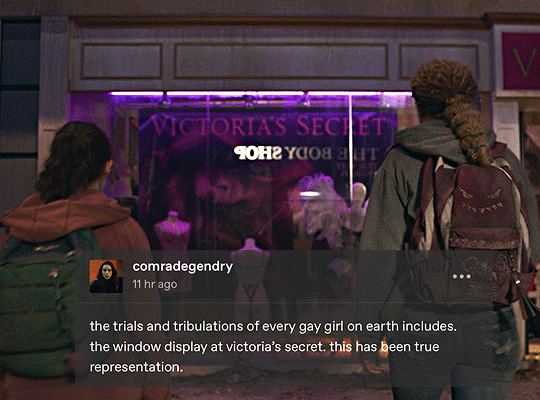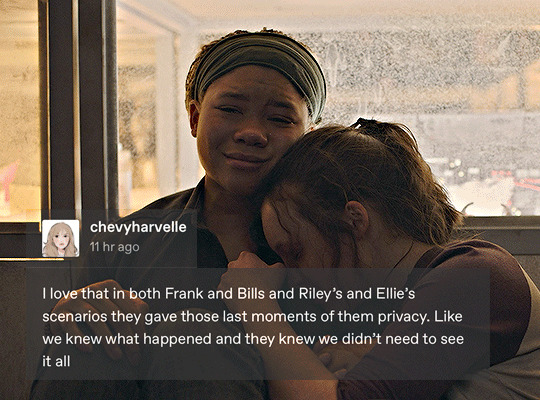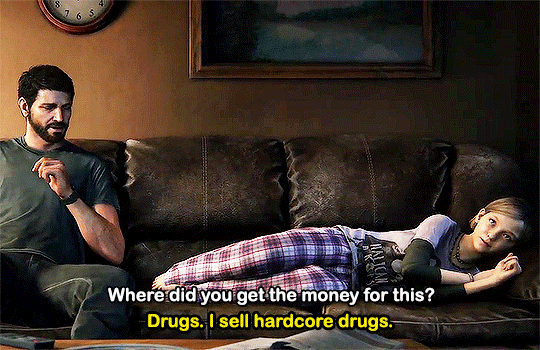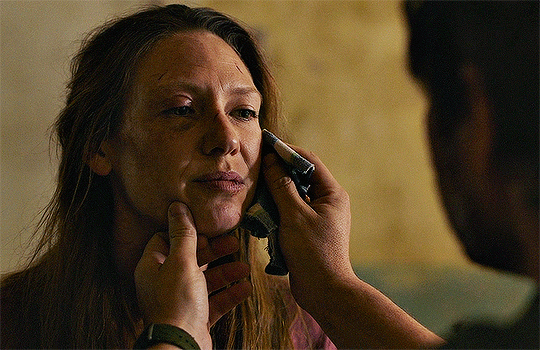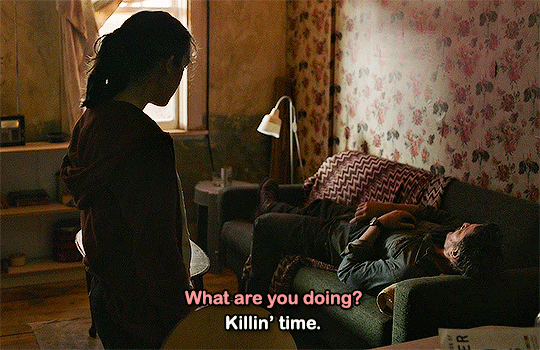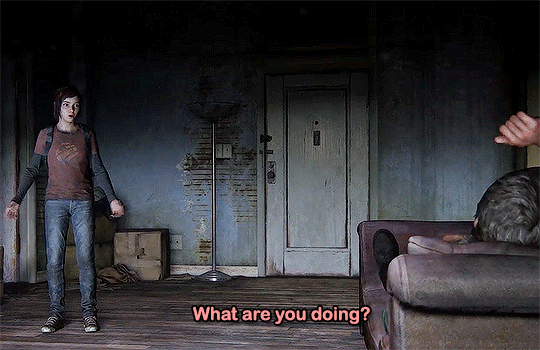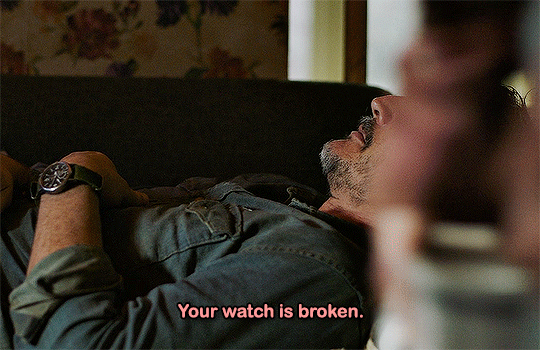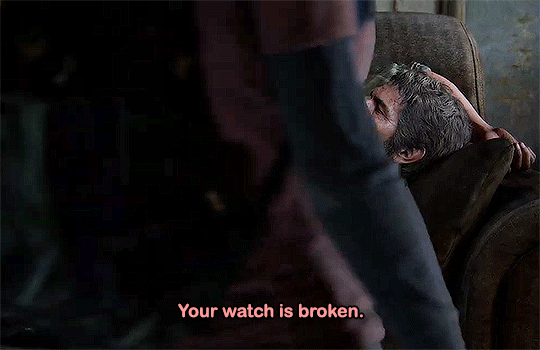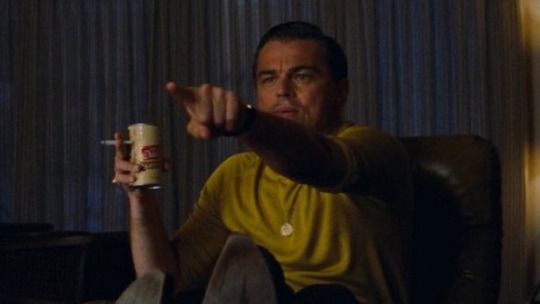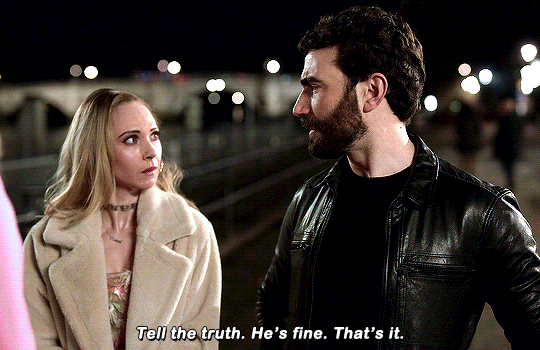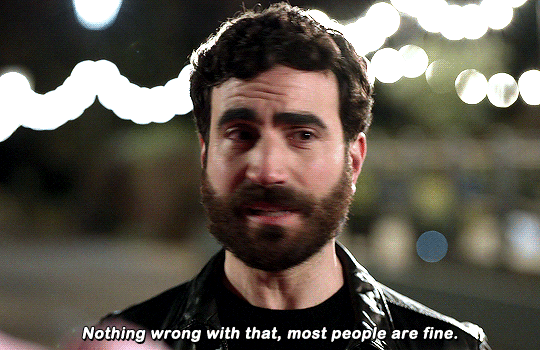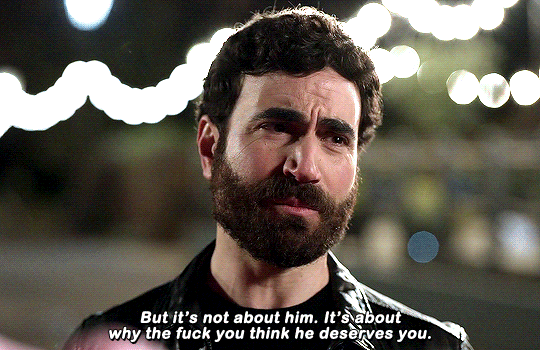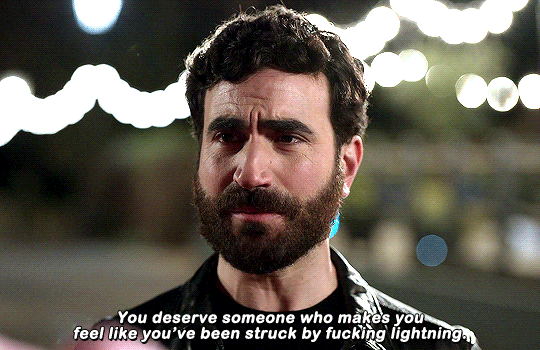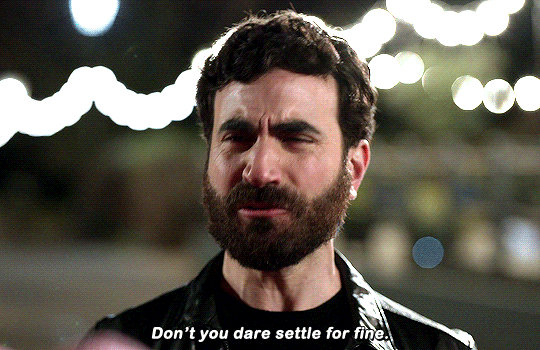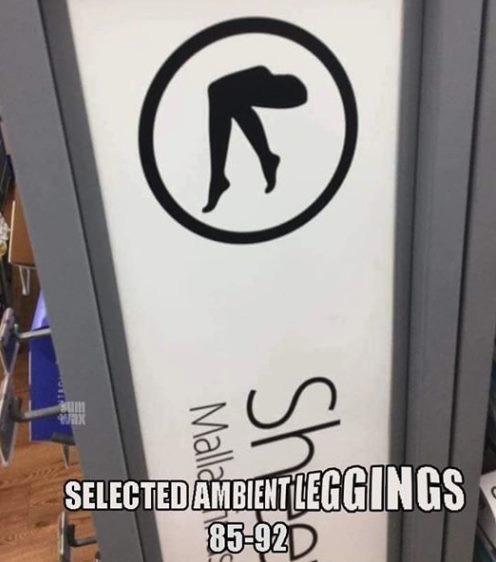Don't wanna be here? Send us removal request.
Photo
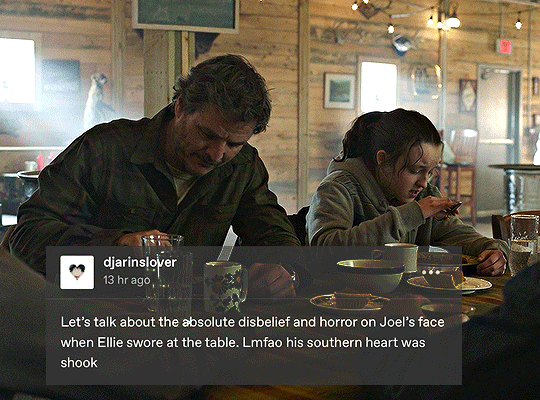

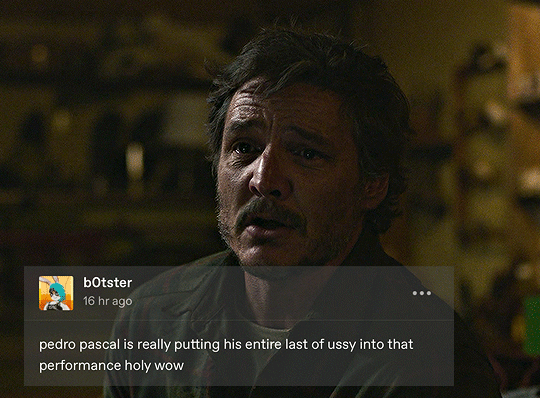
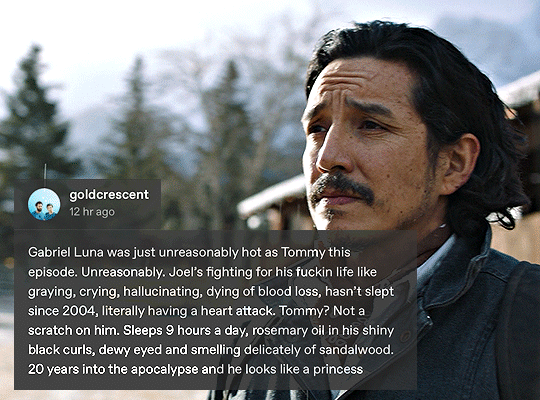
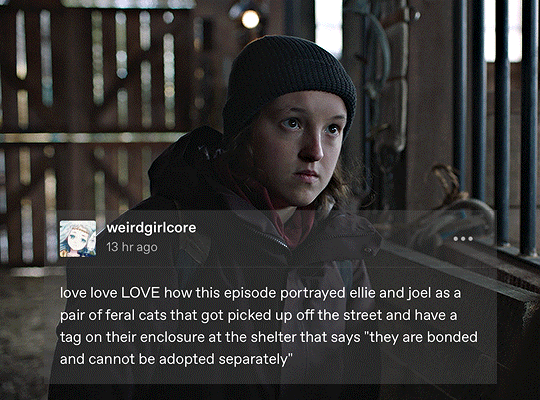

THE LAST OF US + the collective emotional trauma it causes <3
41K notes
·
View notes
Text
I am floored I am flabbergasted I cannot believe it
In the game, Bill and Frank were almost nothing. Bill was a joke character, he shows up, he’s a doomsday prepper, he helps you fight zombies, gives you a truck battery, and you leave. Ellie steals some comics and a gay porno magazine from him, and he’s never seen again.
Frank WAS nothing. You never see him. You find his BODY, he got bit and hung himself, and he got bit trying to escape Bill because he hated him so much and the note says he’s happier dead than living another day with Bill
And then the show. The show took that shallow, mean storyline, and made it beautiful.
Now Bill and Frank are real characters. We know them. Really KNOW them. And they don’t hate each other. In fact they’re in love. They’re really IN LOVE. And yes they argue and disagree sometimes but they’re a real couple who really love each other while still being two people so sometimes they fight. That doesn’t change that they’re in love
And they GET TO BE IN LOVE, the whole time, they’re doing things for each other. They’re living in their little gated paradise and it’s beautiful. They make it pretty. They grow food. They’re eating gourmet meals. They’re not just surviving. They’re thriving. They’re living
They took that mean spirited game story, and they made it the point, the heart, the example of what people are still fighting for. The proof that yes, even in the middle of the apocalypse, you can still live a good life. Not an easy life, you will still have bad days, you’ll have bad days with the ones you love, but you will still love them, and they will still love you. And then, with all these grizzly, horrific deaths we see two deaths that are peaceful. Painless. Two men who die old, satisfied, and in the arms of their purpose.
Don’t you see? It’s about hope
Bill and Frank are hope

26K notes
·
View notes
Text
recontextualizing fry and leela as an annoying but earnest twitch streamer and his inexplicably hot and intimidating girlfriend
168K notes
·
View notes
Text
the transition in the past two decades from family sitcoms and ‘friends all living together’ sitcoms to workplace comedies signifies a larger shift in how work dominates our lives and leaves no space for traditional family or community raising in this essay i will
56K notes
·
View notes
Text
im having feelings about the uffington white horse again
254K notes
·
View notes
Text
A Matter of Terminology
The Self as a Site for Research
Conversation with Oli Stratford
Michael Kaethler
OS:
How do you see the auto-ethnographic turn in design: is it a description of something, a framework that could be useful for designers to employ, or something else? What is it and how do you position it?
MK:
This is something that we're trying to grapple with. It describes a pattern that we have witnessed in design over the last decade, a type of design that rises out of poeticism, out of an exploration of the self and its particular context. We want to describe it, give it a name, recognize it as something more than an outlying exception to design–something that is worthy of its own category. As a researcher, I must admit to being keen on applying taxonomies and categories, even if I accept that these are inherently fuzzy, as practice does not adhere to theory, but rather the other way round. In giving it a name, we can engage with it on a deeper level, seek to understand what it means for practice, how it has evolved, whence it came, and perhaps also where it is going and how this will affect other practices within design.
OS:
You frame the book in contrast to certain tendencies in design such as solutionism, which in focusing on the idea of a solution can somewhat remove the designer from the equation. It frames the work as being the designer designing for others, for the many, but not necessarily for themselves. Do you think that putting more of the designer into the work, and acknowledging that at least an aspect of design is a personal response to the world, is liberating for designers?
MK:
Absolutely. There is a recognition here of the designer. For too long, the designer has either been the 'star' (with a focus on ego and grand or fashionable projects) or all too absent (with a focus on design as a kind of science which understands the designer as fulfilling a more technical role of addressing problems). We are looking at acknowledging a different aspect of the designer and foregrounding them within the design process, recognizing that design research is deeply personal and that design need not only be for others but also for the self (coming from a deep personal need or desire, and addressing one's own specific world).
OS:
What I find interesting is the move to classify these types of projects under auto-ethnographic design. A lot of the designers I speak to say that they want to escape labels, particularly given that whole discussion around how design sits next to art, and what the difference between the two is. find the most interesting answers to that come from the practitioners who don't really care, and who are not particularly concerned with disciplinary boundaries because they don't do anything helpful for their work.
MK:
I would suggest that there are many who are struggling to understand what it is that they're doing, who would benefit from these distinctions in order to position their work for themselves and to a wider audience. would also suggest that a taxonomy around a practice can embolden the constitutive characteristics, providing a permissiveness to emerge. There is a concern amongst designers that their work might be too 'artsy,' too much about extravagant expression. A taxonomical space can provide safety to develop these practices, valorizing them, and encouraging the further pushing of boundaries.
OS:
That does make me question what the terminology of auto-ethnography offers that others don't, however, such as authorship. One idea that immediately comes to mind is that while auto-ethnography is intensely personal, it also suggests a sense of cultural critique and a connection to broader social issues. Even though it acknowledges it the subjectivity in design, the positioning also suggests that you can still latch onto things outside of yourself. Perhaps auto-ethnographic design, with its history in the social sciences, emphasizes that outwardness in a way that authorship doesn't make quite so explicit-that this form of design may be personal and expressive, but it's also research and critique. In contrast, perhaps there's a risk that authorship could be misunderstood as emphasizing expressiveness for expressiveness's sake, without the same inclination towards research.
MK:
Yes, I agree with much of what you're saying. Authorship is an integral part of auto-ethnography but it is not its entirety. Auto-ethnography is about the position we take in trying to understand and change the world, recognizing the position of the self as an essential starting point for that understanding. Perhaps you could say that it's a form of applied authorship as a method for exploring the self and one's context.
OS:
think there may be something important that stems from talking about authorship or auto-ethnographic design, and presenting the self as a site for research. The self is always present in design, just to differing extents. For this reason, I find it exciting how authorship and auto-ethnography could influence how the self is articulated in other forms of design, such as product design or industrial design. These types of design are not as far removed from authorship as we might assume, and re-centering those practices through an auto-ethnographic lens could potentially nudge these fields towards more explicitly personal forms of practice.
MK:
What danger do you see in giving this term life?
OS:
I find that you get these increasingly baroque descriptions of what designers are doing. The more you try to pin it down, the more it wriggles free. I am more a fan of just saying 'designer' without further elaboration. Artists do that, for instance, and there doesn't seem to be quite the same anxiety about not being specific in that field. Perhaps there is an insecurity about doing it in design because the field has been so hooked with commerce and lifestyle, and with so many elements that are seen as being shallow or unsavoury in society, that designers want to strategically distance themselves from all that. So descriptions of a specific type of design sometimes seem to be as much about rejecting other forms of design as they are saying anything positive: it's almost like saying 'I'm not that kind of designer' as a form of identity. I think it's possible that terms like auto-ethnographic design could give some strength and support for certain design practices to grow, which will in the end also help reshape the broader understanding of design. In this sense, it could perhaps be seen a as a useful ladder that we climb up, but which ultimately becomes redundant when its specific qualities become integrated within design at large. Often when we need a new piece of terminology, it's to bring attention to something that is otherwise neglected. Authorship does some good work in doing this because the degree of subjectivity that goes into design is not widely appreciated. However, in doing so it may miss out on other things, such as the element of research that you cover in auto-ethnographic design. But ultimately these terms hopefully fade away to the point of course designers do this,' and thus are no longer necessary. Which is itself a kind of vindication of the terminology that it becomes absorbed into the general language of design.
MK:
Indeed, hopefully the auto-ethnographic turn in design is just that, a turn, and these practices will over time be fully integrated and accepted within the wider design practice. I see this turn as potentially being able to expand design, pushing its boundaries (uncomfortably sometimes) and perhaps also building closer bridges or dissolving distinctions between the arts, design, and anthropology. Designers are becoming increasingly aware that their practices offer a nuanced interpretation of the material realm and that this is highly useful for not only expression, cultural critique, serving some function or utility, but also research in academia or in various policy settings. Today when you speak of design research it's often about the types of design that are easily transformed or captured by academia (accessible practices and outputs), or perhaps about the by academics themselves. This type of design being carried out either through how the type of design is open to analysis, practice is conceived or the intention of its outputs. However, other forms direction and poetic or 'artistic' forms and not considered as of design, tend to of design, the more be relegated to expression valid forms of research in and of themselves, or only to be the site of research by someone other than the designer. This book hopes to shift this dynamic by emphasizing the important knowledge and research that can emerge from a materially oriented self-exploration.
OS:
When I hear the term 'research' I tend to think about large research projects. But there's something very healthy and helpful about seeing design objects as research and not just as frippery or pretty objects. Not that there's anything wrong with frippery or prettiness, but anything that can point out that these things can be serious pieces of research too is useful and valuable. I guess it's worth remembering that terminologies are not totally neutral and that they have value judgements baked in. The term object is reasonably neutral, I suppose, although of course there are still presuppositions, but something like 'research' implies a huge value judgement. We all love research, and it's perceived as having considerable value. So when we use that term--when we decide what we'll allow to be deemed research and what we won't-we're making a whole series of judgments. Design is often undervalued as a method for research, so I like that auto-ethnography flags that aspect of it up quite clearly.
MK:
Indeed. And the term 'research' also has its hidden agendas, which do not always play so well for design. On one hand, it legitimizes design in a new way, seeing it as a way of understanding things and not just making them. But it has also led to an increasing academicization of design, which has included new rules, formulations, and actors that are constraining some of the more artistic oriented forms of design. I am hoping that the auto-ethnographic angle can both enable recognition of a more creative and expressive form of research while at the same time remain too abstract and materially oriented for the mainstream academic gaze.
OS:
I am interested in how this may prompt reflection from a wider design audience (non-academics) and if it will help designers theorize or make sense of their work in a different way. Do you think that by putting this terminology out there that it will shape the way people design? To what extent does a new category shape design a practice?
MK:
An awareness of what one does certainly can help refine and crystalize practices, it also celebrates it. We're not bringing this practice into life; it's been around for decades. However, this book is about acknowledging it as a unique and important mode of practice within design. Giving it some recognition is the least we can do but I suspect that in recognizing it, we are also giving these types of practices louder voice and conceptual support. I don't see auto-ethnography as an identity, as in I'm an auto-ethnographic designer,' but rather as a way of describing a practice and in some cases also the objects that emerge from this practice.
OS:
I suppose one important thing about terminology is that it shows a different way to carve something up. It challenges the tendencies to constantly analyze things in the same way. The ways in which we currently frame design are not set in stone and there are other ways to think about these things. It may be time to think of design as a serious mode of research.
MK:
Putting the 'auto' in front of ethnography raises questions on whether we need more self-description. I wonder if auto-ethnographic design will be a controversial term, loved by outliers and resented by more established factions within design.
OS:
I would be surprised if it isn't divisive. New terminologies usually are because they bring different aspects of the field to light that haven't been well appreciated before. It's easy to bristle at change or to interpret a new term as a critique of what has come before. Equally, new terminologies often come into criticism for pomposity, or navel gazing, or emptiness -which is sometimes fair.
MK:
Perhaps auto-ethnographic design provides a framework that values navel gazing, understanding the intrinsic value in design.
OS:
We see art as producing all kinds of values-aesthetic, commercial, even ethical to an extent. We accept that art can provide a range of values, but when it comes to design, we don't seem to see such a range. I don't think design is always perceived as a legitimate vehicle for cultural expression, or else as providing a sense of therapy for the practitioner in the way that, for example, literature is-the idea that somebody just has to write and that's good for them. But there is nothing intrinsic about design that means that it couldn't have these kinds of values. suppose these tendencies are just hallmarks of the past and of how we conceived of design when it was very clearly linked to industry, despite there being a number of examples across the last century of it doing a whole range of different things. I think design still seems to provoke a faint sense of bafflement if it's not being deployed for problem solving or to generate commercial value. That is strange, because there are not many disciplines that are quite so hemmed in as that. For example, within writing you can have beautiful, literary writing that isn't practical or doesn't provide clear answers, and that's wonderful; similarly, you can have text which is as dull as dishwater, but which is worth persevering through because there's much to be gained by struggling through it. It's the same with art: we have no problem admitting that it's very catholic as a field, and can be all sorts of things. But I never get the sense that everybody feels that they can legitimately talk about design as a way of creating an assortment of values.
MK:
Using new language to describe design, such as this book does, might a be a method for pushing design's boundaries-in the case of this book, towards the arts. It expands what design can be or mean.
OS:
Yes, exactly. There's a certain ballsy-ness about it-saying something deliberately strong to shake a preconception.
MK:
Yes, and to do so by not talking about design vis-à-vis the arts. Art has long made claims to meaning making; making space for meaning making in design is a worthy pursuit.
OS:
I think that design doesn't necessarily have the language to justify that kind of work at present. We tend to talk about 'art-design,' because the type of value that this form of design brings us is recognized in art, but not so much in design. We tack on the 'art' in order to provide that indication. There is nothing necessarily wrong with that-and I'm a fan of not worrying too much about the boundaries between the two-but it's a shame that design doesn't have a terminology of its own, because it risks leaving it trapped in something of a parasitic relationship. It ends up feeling like design needs to tap into the arts to justify itself, because there is not an internal means to recognize those values. It leaves design as something of a country cousin to art: someone who is a little less urbane, a little less open to so many things, and whose concerns are all rather functional and rough and ready. Maybe that is a good way of looking at it: if a terminology is going to be useful, how were people describing that practice beforehand? If they had to rely on the vocabulary from another discipline, maybe that is a good reason to define it in its own right. It is, of course, fine to borrow vocabulary from other areas, but it feels much healthier to do so when those areas are in a mutual relationship with influences that go back and forth. In this case, I don't know if that is always the the case. The people involved in type of work that is described in this book often have to go to the arts to talk about their practices. But why is that, and what does it suggest is missing in design? Who knows. Maybe similar problems will arrive with using auto-ethnography – particularly as it's a term you're borrowing from anthropology.
0 notes
Text
me at any given time: can we just buckle down and focus on the task at hand please???
my brain:
my brain: ……….ranibow sprimkle……………
630K notes
·
View notes
Photo

the special relationship is as strong as ever, lads
216K notes
·
View notes
